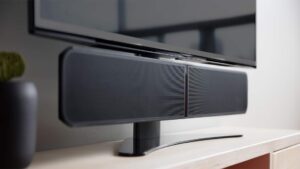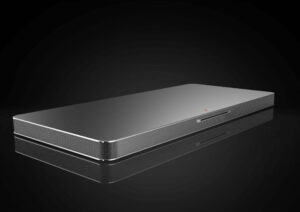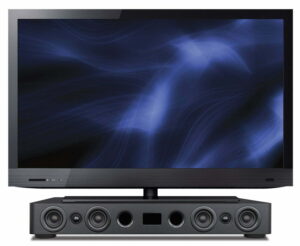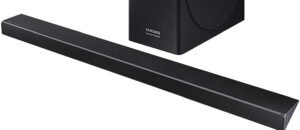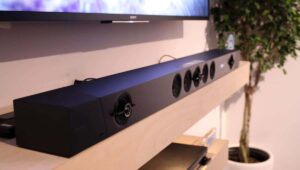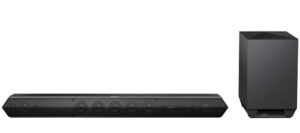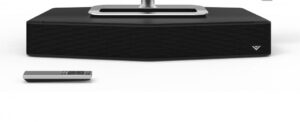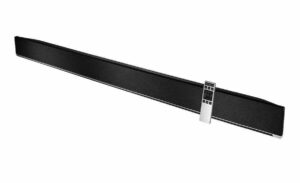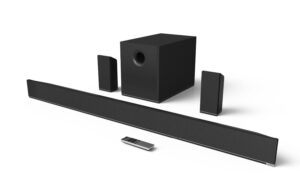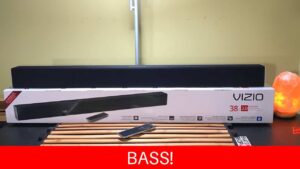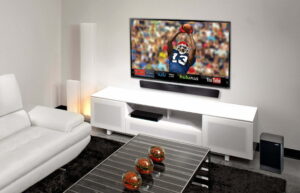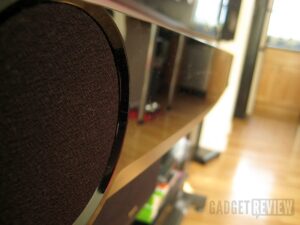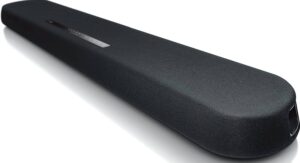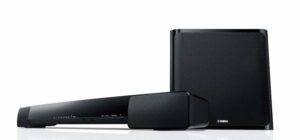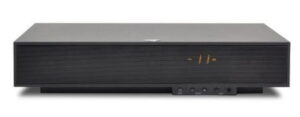I’ve said it before and I’ll say it again: I love Sonos. And while I’ll gladly welcome any new product from the wireless speaker company, I have to be honest and convey my skepticism when they revealed that they had been working on a soundbar for a few years. It might be categorized in the best soundbar category. Let’s find out.
Keep reading my Sonos Playbar Soundbar Review to find out more.
Read Next: SONOS Play 5 (2015) Review
Overview
Price: $699 on Amazon
Available: Now
What We Liked:
- More than a soundbar; the complete Sonos experience
- Easy setup
- Solid sound stage and sonically sound
What We Didn’t:
- No DTS support
- Pricey for a soundbar
Soundbars are a type of speaker that emerged with the proliferation of the flatscreen TV. Much like the TVs that measure no more than an inch or two thick, the soundbar significantly reduces not only setup time thanks to the two plug (power and optical TOSLINK) design, but clutter as speaker cord is negated from the equation. And while very few soundbars can truly replace an individual set of speakers, or even a great smart speaker, they’re most certainly an excellent compromise, especially in the face of convenience.
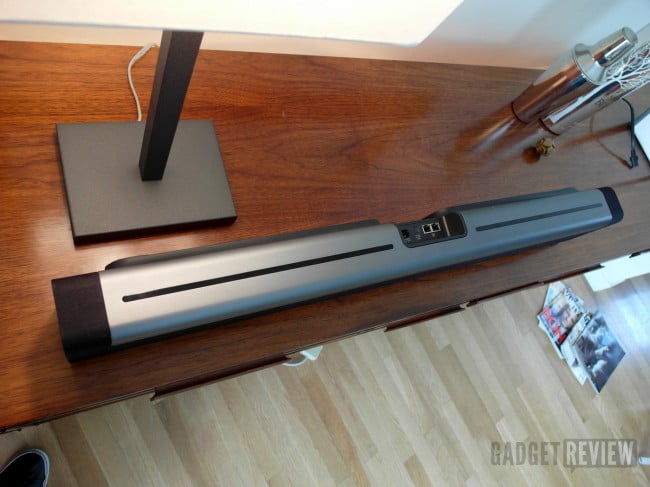
So, the question lingers: can Sonos build a soundbar that not only competes with the big boys, such as Yamaha, Vizio, Bose, and those alike, but can it masquerade as a complete home theater solution and all the while fit seamlessly into the brand’s wireless ecosphere. But before I answer that question, or attempt to do so, we’re gonna examine the convenience and simplicity of Sonos and what it means to opt for this solution over one of their Connect boxes.
What is Sonos
So if you’re not familiar with Sonos, they’re largely a top wireless speaker company. It’s an oversimplification, as Sonos has built not just wireless speakers, but wireless speakers that effectively have their own music server built-in. Think about it.
Airplay requires a phone, tablet, or computer to playback music, as does any Bluetooth speaker. The phone is the server; it connects to the web, translates the music, and beams it to the connected speaker.
Sonos on the other hand requires a phone, tablet, or computer to control the system, but doesn’t require it to be present or connected at all times to playback music.
Instead, a small box connects to your home’s router, which acts as a bridge (in fact that’s its name, Bridge) to the speakers (you can also plug directly in with an Ethernet cord). Once the bridge is connected, the speaker can run on its own, connect with other speakers, and playback music and radio from a vast array of sources (Spotify, Rhapsody, Pandora, etc).
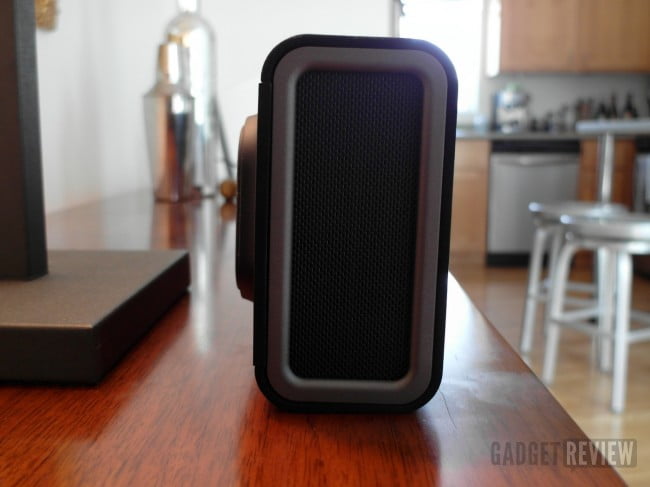
Sonos’ Other Speakers
Until the Sonos Playbar emerged, the company offered two speakers, and two boxes to connect to your existing speaker system. None of them was an all-in-one home theater solution, though the boxes, the Connect and the Connect: Amp, can turn your existing home theater into a Sonos connectible system. The Playbar, provided you’ve got a bridge installed, can run completely on its own. Looking for a high-end sound bar with a wireless subwoofer? Check out the Sony HTST7 HD sound bar with wireless subwoofer review.
Setup and More
Much like many soundbars of today, the Playbar can be mounted on the wall. It can also be perched in front of a TV, and thanks to an infrared pass-through port it can block your set’s sensor and still allow you to still switch channels and inputs. Moreover, you can program any remote to work with the Playbar with a few button presses, allowing you to control volume and muting on the Playbar.
That said, the Playbar is super simple to set up; just plugin in the power and TOSLINK (included) cord. Then install and fire up the app on your Android or iOS device and follow the onscreen instructions. You’ll be asked how far you sit from the associated speakers, and if you have rear speakers or a sub to set up. Ultimately, the onscreen prompts take all of the guesswork out of the process, so much so that even the tech illiterate can get the system up and running in a matter of minutes.
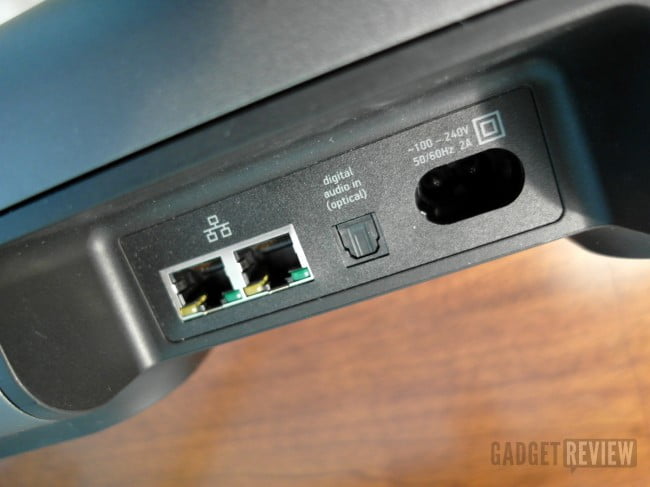
Surround Sound and SUB
If you happen to have two Play:3 speakers and a sub, you can also add those to the mix and create a 5.1 surround sound experience. What’s convenient is that since the very infrastructure of Sonos is wireless, there are no cords to connect to the speakers – you’ll just need to ensure that the sub and Play:3s are in proximity to an electrical outlet. If you prefer a single speaker with two soft dome tweeters and four midranges, read about a great speaker system in our Proficient Audio MAXTV MT2 TV sound speaker review.
Audio Delay
Delay on the Playbar seems to be a non-issue between the onscreen action and the audio, which has been a point of contention for those that have used the Play:3s as their TV speakers. In other words, everything happens in real-time, as it should, though you can slow the Playbar’s output if necessary in the iOS or Android app. I did however experience a slight delay between the Playbar and the speakers placed in other rooms in my home. It’s slight, but perceivable. Provided the speakers aren’t in too close of proximity to one another it should be a none issue.
No DTS
Aside from setup, there are few user options. That is to say, the Sonos Playbar is mostly plug-and-play once it’s installed. It’s not compatible with DTS, or really any other brand of audio decoding other than Dolby Digital. And for that, it very well might remain a non-option for audiophiles, among other reasons.
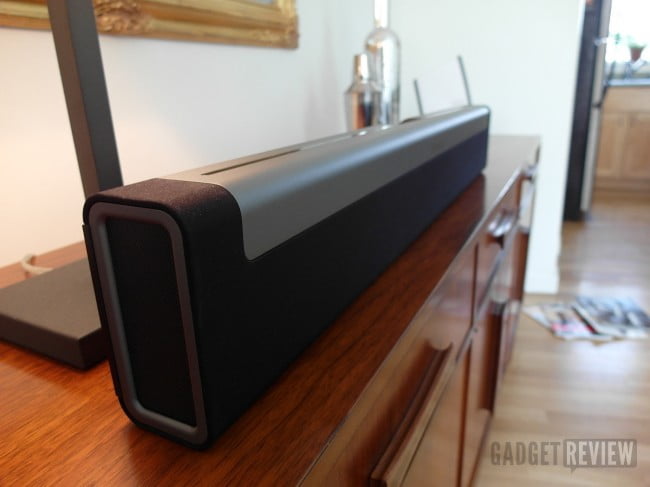
Sonos iOS and Android App
The app, if you’re already using a Sonos set of speakers is the same, only now there is a TV option, which allows you to pipe TV audio throughout your home – if you so chose, you could listen to a game that is otherwise blocked out from radio on every speaker in your house. In addition to the volume slider, the Playbar can be set to Night Sound (this reduces bass) and/or Speech enhancement (this option increases the onscreen voices). Both latter options work well, though I should note that I often left them on by mistake as there is no visual indicator on the Playbar itself to tell you when they’re activated.
How to Place the Sonos Playbar
If you happen to lay the Playbar in front of your TV you’ll want to position it differently than you would if mounted on a wall – you’ll lay it on its back such that the 9-speakers fire upwards. Ideally, you’ll have the Soundbar positioned at eye level, or just below, but Sonos says that it can work above the TV as well, which is how I had it positioned, facing me.
Playbar Sound Quality
My Playbar has been used extensively through and through. I’ve listened to a wide range of music, watched different types of movies, and maxed out the volume on a large number of occasions (at all hours of the night). So suffice to say it’s well broken in.
Alone the Playbar is fairly well-rounded when it comes to music. It struggles a bit with the higher frequency lows but can handle frequencies in the lower range with a surprising amount of response and fullness. That said, the Playbar is largely unsatisfying without the Sonos Sub, especially when watching an action-packed flick or even when listening to music. Unfortunately, that won’t make up for the loss in sound detail you’d otherwise get if listening on a standalone, multipart system, but that should to a large degree goes without saying.
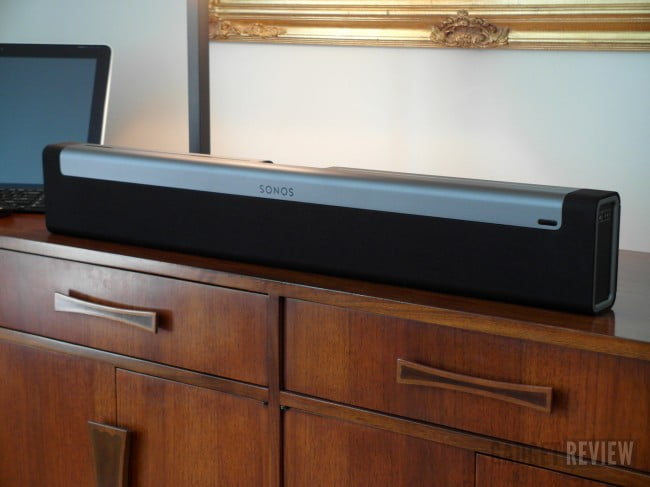
Compared to two Play:3s that have been paired together to form a stereo pair there is not a vast difference, at least from a fidelity standpoint. However, sonically the Playbar can achieve forced, or fabricated surround sound, something no amount of Play:3s can accomplish, and it does it quite well. Toss in a pair of Play:3s with the Playbar and the Sub and you’ve got a complete system, a full 5.1-channel surround system. There is some compromise since the rear speakers are wireless, but it will largely go unnoticed since they’re only handling the surrounding sounds.
That said, I found that the soundstage felt much bigger when the Playbar was laying its back, firing audio towards the ceiling. The two Play:3s surround speakers don’t add much to the mix when listening to music as it’s very much an all-channel scenario. However, in terms of movie playback, they can provide true discrete channel surround sound, though in my opinion there is something lost in fidelity, or accuracy of the sound otherwise compared to a true standalone surround system – possibly because of their wireless nature. Sonically the Playbar by itself is relatively fulfilling, but once you have a taste of the Sonos SUB you’ll wonder how you lived without it. In other words, you don’t know what you’re missing until you’ve tried it.
Wrap Up
All speakers included (Sub, 2x Play:3s, and the Playbar) the total price is $1996…before tax. So the argument quickly becomes convenience versus bang for the buck. A boxed solution with satellite speakers could cost $1,000, add in a mid-ranged amp for $400, and a Sonos connect, and you’re only truthfully saving a few hundred. And that few hundred doesn’t account for convenience (iPhone/Android controllable with music), setup up time (no speaker cord to tangle/mess with), versatility (the Play:3s can be repurposed as needed), and all together with simplicity (just plug it in and you’re off to the races). And although one could quickly point to the loss in fidelity in terms of the Sonos wireless ecosystem, which mind you is only perceivable to some, I quickly point you to the fact that nobody does wireless audio better.
